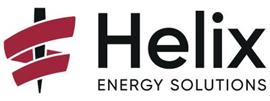Financial Condition and Liquidity
Cash and cash equivalents were $243.9 million at June 30, 2021 and excluded $71.3 million of restricted cash pledged as collateral on a short-term project-related letter of credit. Available capacity under our revolving credit facility was $172.3 million at June 30, 2021. Consolidated long-term debt decreased to $335.7 million at June 30, 2021 from $336.0 million at March 31, 2021. Consolidated net debt at June 30, 2021 was $20.5 million. Net debt to book capitalization at June 30, 2021 was 1%. (Net debt and net debt to book capitalization are non-GAAP measures. See reconciliations below.)
* * * * *
Conference Call Information
Further details are provided in the presentation for Helix’s quarterly teleconference to review its second quarter 2021 results (see the “For the Investor” page of Helix’s website, www.HelixESG.com). The teleconference, scheduled for Tuesday, July 27, 2021 at 9:00 a.m. Central Time, will be audio webcast live from the “For the Investor” page of Helix’s website. Investors and other interested parties wishing to participate in the teleconference may join by dialing 1-800-954-0656 for participants in the United States and 1-212-231-2919 for international participants. The passcode is “Staffeldt.” A replay of the webcast will be available on the “For the Investor” page of Helix’s website by selecting the “Audio Archives” link beginning approximately two hours after the completion of the event.
About Helix
Helix Energy Solutions Group, Inc., headquartered in Houston, Texas, is an international offshore energy services company that provides specialty services to the offshore energy industry, with a focus on well intervention and robotics operations. For more information about Helix, please visit our website at www.HelixESG.com.
Non-GAAP Financial Measures
Management evaluates performance and financial condition using certain non-GAAP measures, primarily EBITDA, Adjusted EBITDA, net debt, net debt to book capitalization and free cash flow. We define EBITDA as earnings before income taxes, net interest expense, gain or loss on extinguishment of long-term debt, net other income or expense, and depreciation and amortization expense. Non-cash impairment losses on goodwill and other long-lived assets and gains and losses on equity investments are also added back if applicable. To arrive at our measure of Adjusted EBITDA, we exclude the gain or loss on disposition of assets and the general provision for current expected credit losses, if any. In addition, we include realized losses from foreign currency exchange contracts not designated as hedging instruments, which are excluded from EBITDA as a component of net other income or expense. Net debt is calculated as total long-term debt less cash and cash equivalents and restricted cash. Net debt to book capitalization is calculated by dividing net debt by the sum of net debt and shareholders’ equity. We define free cash flow as cash flows from operating activities less capital expenditures, net of proceeds from sale of assets.
We use EBITDA and free cash flow to monitor and facilitate internal evaluation of the performance of our business operations, to facilitate external comparison of our business results to those of others in our industry, to analyze and evaluate financial and strategic planning decisions regarding future investments and acquisitions, to plan and evaluate operating budgets, and in certain cases, to report our results to the holders of our debt as required by our debt covenants. We believe that our measures of EBITDA and free cash flow provide useful information to the public regarding our operating performance and ability to service debt and fund capital expenditures and may help our investors understand and compare our results to other companies that have different financing, capital and tax structures. Other companies may calculate their measures of EBITDA, Adjusted EBITDA and free cash flow differently from the way we do, which may limit their usefulness as comparative measures. EBITDA, Adjusted EBITDA and free cash flow should not be considered in isolation or as a substitute for, but instead are supplemental to, income from operations, net income, cash flows from operating activities, or other income or cash flow data prepared in accordance with GAAP. Users of this financial information should consider the types of events and transactions that are excluded from these measures. See reconciliation of the non-GAAP financial information presented in this press release to the most directly comparable financial information presented in accordance with GAAP.
